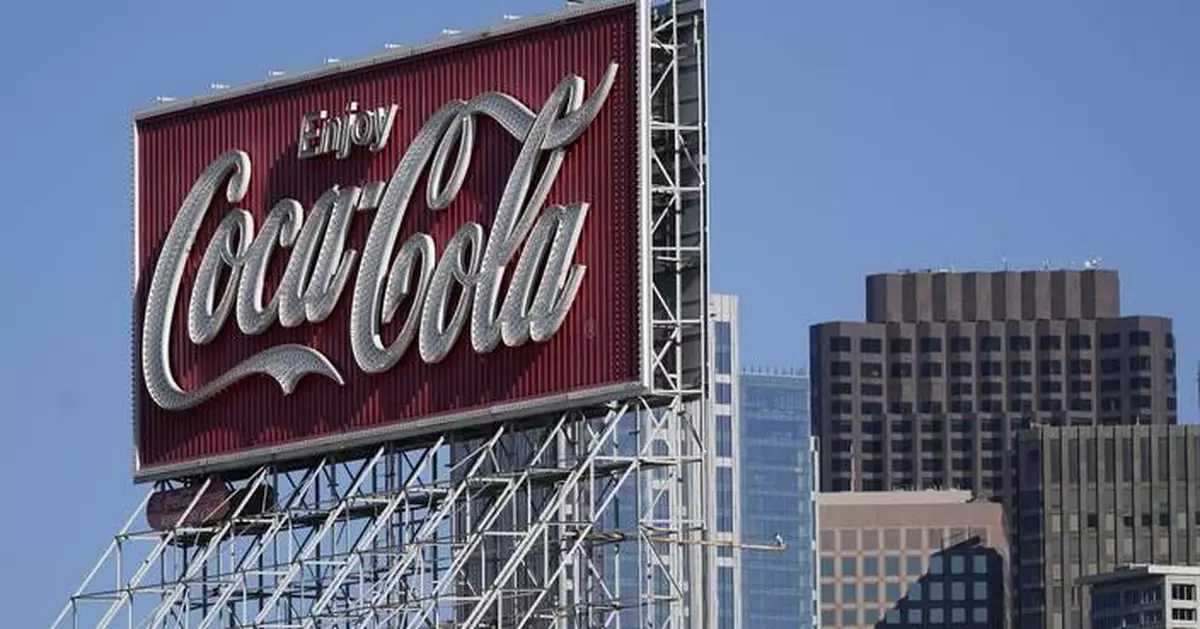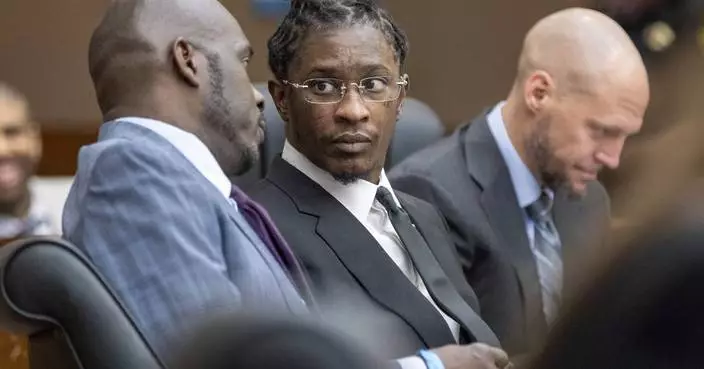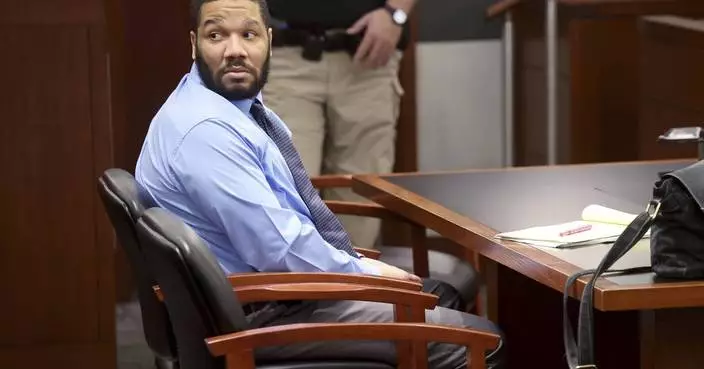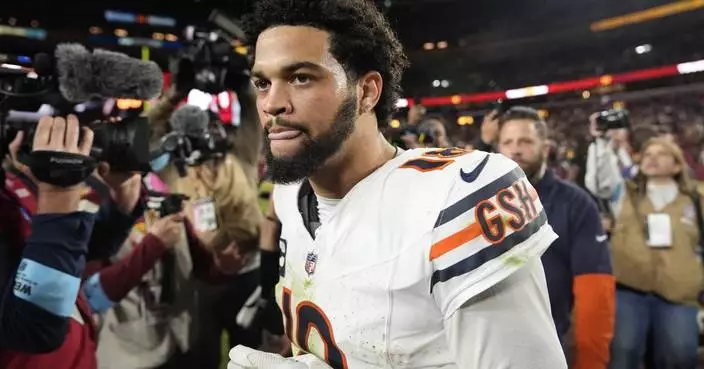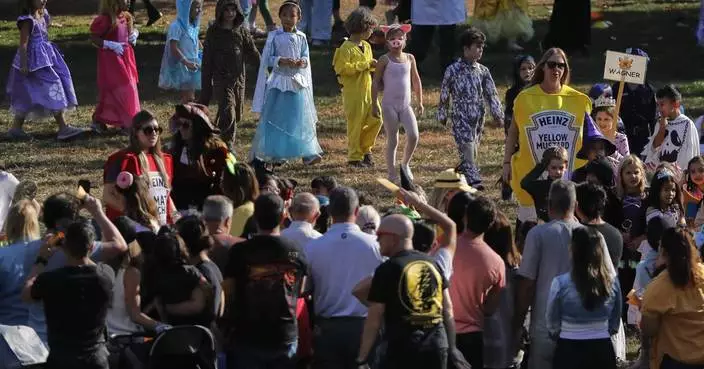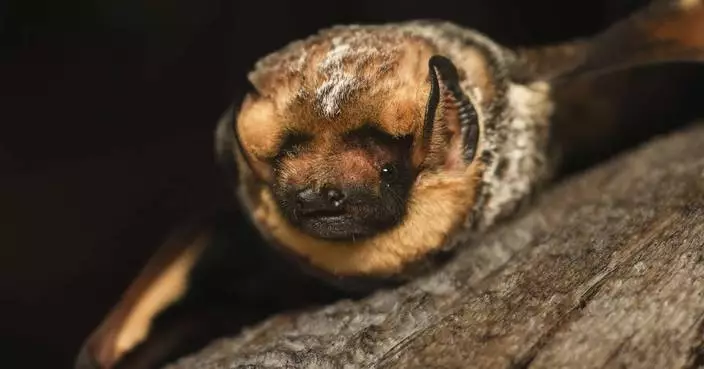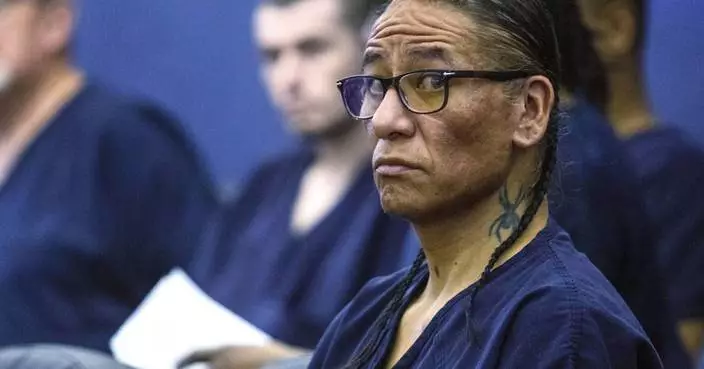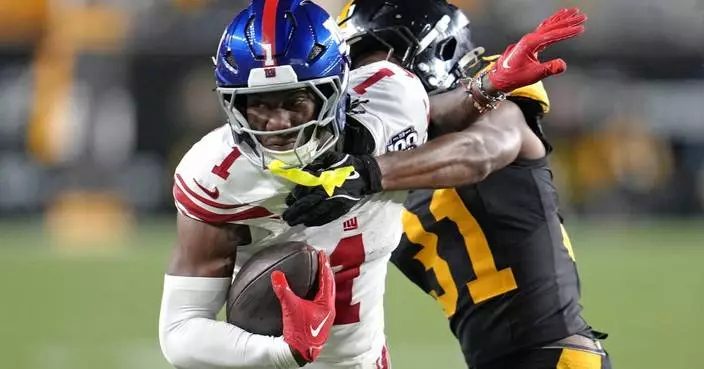LOS ANGELES (AP) — Los Angeles County is taking on Pepsi and Coke for their role in plastic pollution.
In a lawsuit filed Wednesday, the county alleged PepsiCo and Coca-Cola companies have misled the public about the recyclability of their plastic bottles and downplayed the negative environmental and health impacts of plastic disposal.
“Coke and Pepsi need to stop the deception and take responsibility for the plastic pollution problems your products are causing," LA County supervisor Lindsey Horvath said in a statement. "Los Angeles County will continue to address the serious environmental impacts caused by companies engaging in misleading and unfair business practices.”
Coca-Cola owns brands like Dasani, Fanta, Sprite, Vitamin Water, and Smartwater, while PepsiCo owns Gatorade, Aquafina, Mountain Dew, and more. The two companies have been ranked as the world's top plastic polluters for five consecutive years, and Coca-Cola has taken the number one spot for six years, according to global environmental group Break Free From Plastic.
PepsiCo produces approximately 2.5 million metric tons of plastic and Coca-Cola produces approximately 3.224 million metric tons of plastic annually, according to Break Free from Plastic.
A European Union consumer protection group and environmental organizations filed a legal complaint against Coca-Cola, Nestle, and Danone last November, accusing them of being misleading when representing packaging as 100% recycled or 100% recyclable.
The LA lawsuit said Coca-Cola and PepsiCo have employed “disinformation campaigns” for consumers to purchase single-use plastic, believing them to be recyclable and less harmful to the environment.
It alleged that both companies promised to create a “circular economy” for its bottles, in which plastic bottles can be recycled and reused an endless number of times, while in reality plastic bottles can only be recycled once, if at all.
The American Beverage Association, which PepsiCo and Coca-Cola are a part of, denied the lawsuit’s accusations about their plastic bottle recycling labels.
“The allegation that our packaging is not and will not be recycled is simply not true,” the group’s spokesperson William Dermody said in a statement.
Dermody said California had a 71% bottle recycling rate in 2023, one of the highest in the country, and that their bottles are “designed to be recycled and remade and can include up to 100% recycled plastic.”
In 2022 alone, an estimated 121,324 to 179,656 tons of plastic waste leaked into the land and ocean in California, and plastics make up seven of the top 10 litter products found on beaches, the lawsuit states.
A big part of the problem is microplastics.
Plastics that have leaked into the environment eventually disintegrate into tiny pieces of plastic measuring five millimeters or less. They can affect soil and plant growth, marine and fish life, and are nearly impossible to remove from the environment, the lawsuit states.
Some Australian researchers, on behalf of the World Wildlife Fund, calculated in 2019 that many people each week consume roughly 5 grams of plastic from common food and beverages, and microplastics have been found in body tissues and organs. Though research is still limited overall, there are growing concerns that microplastics in the body could potentially be linked to heart disease, Alzheimer's and dementia, and other problems.
The lawsuit is seeking a court order to stop the companies’ “unfair and deceptive business practices” as well as restitution for consumers and civil penalties of up to $2,500 per violation.
In February 2020, environmental nonprofit Earth Island Institute filed a lawsuit in California asking for damages and an order for Coca-Cola, PepsiCo, Nestle USA, Procter & Gamble and six other companies to clean up the plastic waste they should be held responsible for.
New York state also sued PepsiCo last November for its role in creating the plastic waste that littering the Buffalo River, which empties into Lake Erie and supplies the city of Buffalo’s drinking water. A judge dismissed the case Thursday, stating in a court filing that there was no “failure to warn” the public on plastic-related dangers and that there was no cause of action to punish the companies for the actions of a third party — people who litter.

FILE - Bottles of Pepsi are displayed in a grocery store, in Ill., on Feb. 10, 2022. (AP Photo/Nam Y. Huh, File)
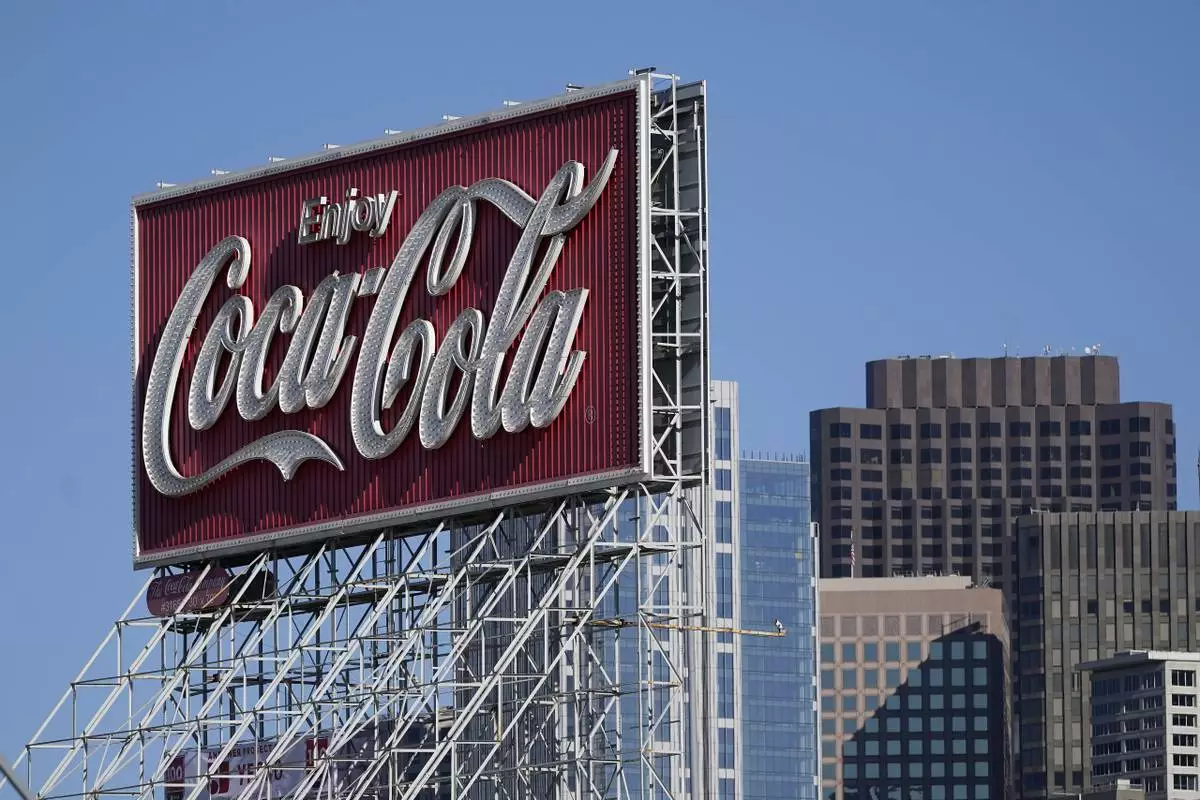
FILE - A Coca-Cola sign is shown in San Francisco, Tuesday, Oct. 27, 2020. (AP Photo/Jeff Chiu,File)
BILLINGS, Mont. (AP) — A Washington state man who authorities said killed at least 118 eagles as part of a wildlife trafficking ring that operated on a Native American reservation in Montana was sentenced Thursday to three years and 10 months in prison, and must pay more than $777,000 in restitution.
The trafficking ring over more than a decade sold eagle feathers and parts on a black market that exploits high demand among tribal members who use them in powwows and other ceremonies. The defendant and others killed at least 107 hawks and as many as 3,600 birds overall, prosecutors said.
The poaching operation centered on the Flathead Indian Reservation in northwestern Montana, which researchers say has some of the highest concentrations of eagles and other birds of prey in the U.S.
Travis John Branson of Cusick, Washington, pleaded guilty in March to conspiracy and wildlife trafficking charges.
U.S. District Judge Dana Christensen in Missoula said during the sentencing hearing that the killing of birds by Branson was calculated, extensive and carried out with full knowledge that he was breaking the law.
“If you had not been caught you’d still be doing it today,” he said.
The sentence was at the upper end of federal sentencing guidelines.
Prior to being sentenced, Branson apologized to the court and his family.
“It’s my own fault,” he said. “I know what I did was wrong.”
He declined to comment further after the hearing.
In text messages obtained by investigators and presented at the sentencing hearing, Branson wrote of killing birds since the 1980s.
“So many I can’t remember anymore LOL,” Branson said in one text.
Other texts described eagles being shot in Nevada and Idaho and instances of dozens of birds being shot on a single weekend.
“This is just a small glimpse of the killing that was happening,” U.S Fish and Wildlife Service Special Agent Mona Iannelli said during the hearing.
A second defendant in the case told authorities that the trafficking ring had been operating since 2009, killing 300 to 400 birds annually. Prosecutors from the U.S. Attorney’s Office have said others were also involved.
Prosecutors had asked the judge to impose a “significant” prison sentence and order Branson to pay restitution of $5,000 for each eagle killed and $1,750 for each hawk.
Branson faced up to five years in prison on the conspiracy charge. But his public defender asked for a sentence of probation and claimed that prosecutors overstated the number of birds killed.
Federal Defender Andrew Nelson also disputed the restitution amount, saying it was too high for the eagles and the hawks should not be counted.
Branson had no prior criminal history, according to Nelson. Because of the criminal charges, he lost his job as a maintenance supervisor for the Kalispell Tribe in Washington, Nelson said, and the defendant suffered a stroke in April.
The criminal case underscores the persistence of a thriving illegal trade in eagle feathers despite law enforcement efforts over the past decade that netted dozens of criminal indictments across the U.S. West and Midwest.
Bald eagles, once highly imperiled by the pesticide DDT, have bounced back in recent decades and are now abundant. The recovery of golden eagles has been more tenuous and researchers have warned that the population is on the brink of decline due to shootings, poisonings, electrocutions on power lines, collisions with wind turbines and other threats.
It’s illegal to buy or sell eagle feathers or other parts. The government has sought to offset strong demand for feathers among Native Americans by providing them for free from a government repository. But they’re unable to keep up with demand and the repository has a yearslong backlog.
Branson made between $180,000 and $360,000 from 2009 to 2021 selling bald and golden eagle parts illegally, court records said.
Court documents quote Branson as saying in a January 2021 text that he was going on a “killing spree” to obtain eagle tails.
“It was not uncommon for Branson to take upwards of nine eagles at a time,” prosecutors with the U.S. Attorney’s Office in Montana wrote in a court filing. “Not only did Branson kill eagles, but he hacked them into pieces to sell for future profits.”
The second defendant, Simon Paul, of St. Ignatius, Montana, remains at large. A federal judge issued an arrest warrant for Paul in December after he failed to show up for an initial court hearing. Court documents have suggested he fled to Canada.
Federally recognized tribes can apply for permits with the U.S. Fish and Wildlife Service to take a bald or golden eagle for religious purposes. Enrolled tribal members can apply for feathers and other bird parts from the National Eagle Repository in Colorado and non-government repositories in Oklahoma and Arizona.
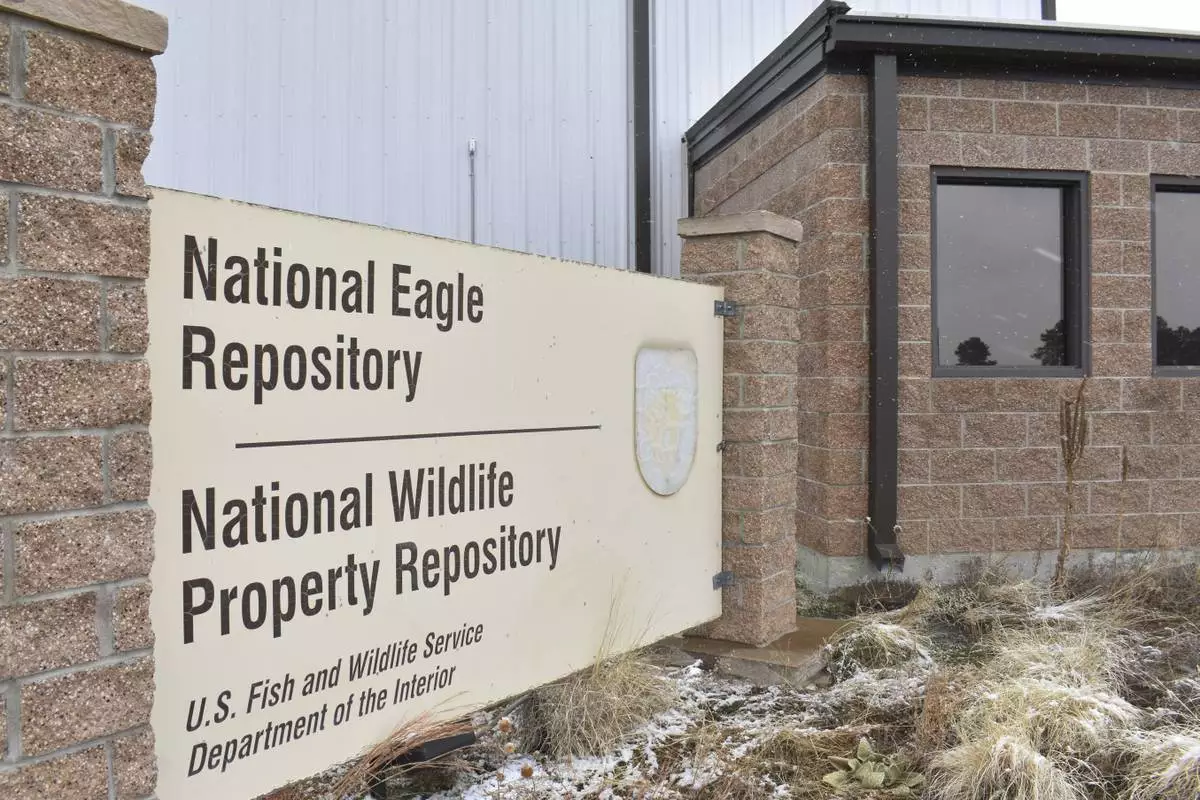
The exterior of the U.S. Fish & Wildlife Service's National Eagle Repository is seen in Commerce City, Colo., on March 8, 2024. (AP Photo/Matthew Brown)
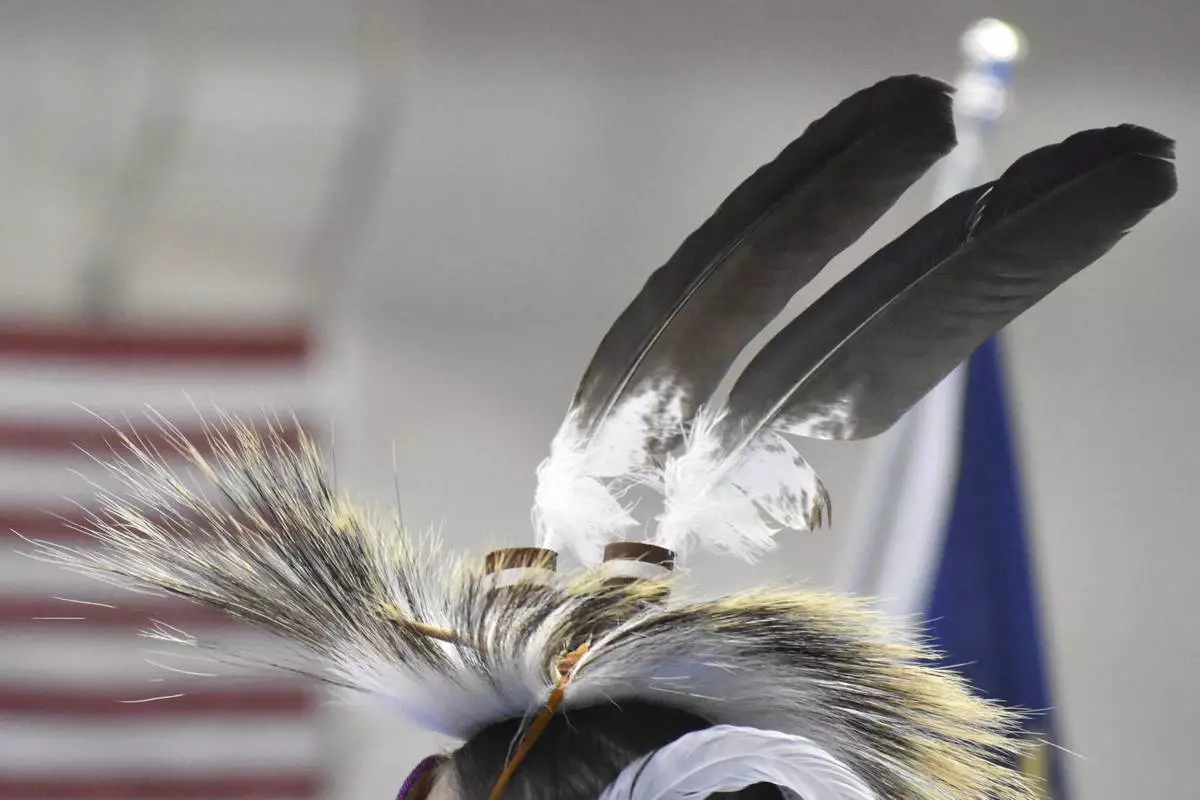
Eagle feathers adorn a headdress during a powwow in Montana, on April 6, 2024. (AP Photo/Matthew Brown)
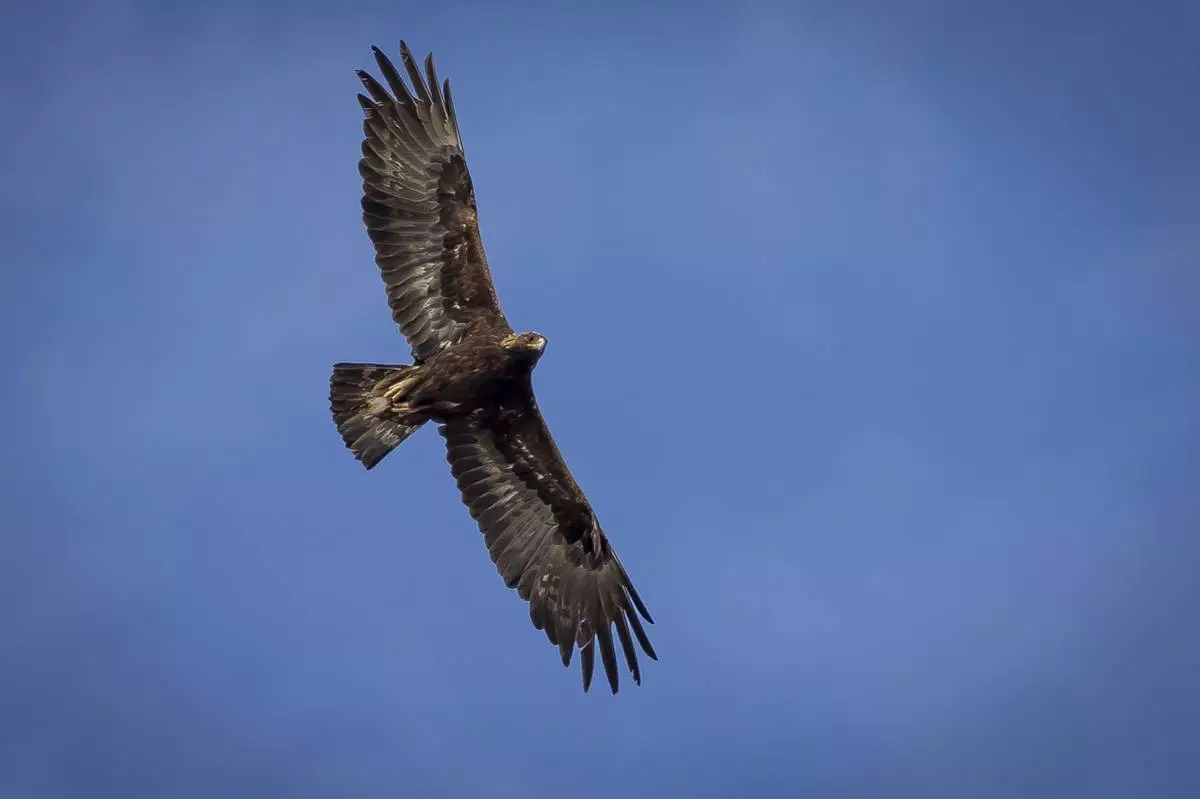
FILE - An adult golden eagle circles overhead in a remote area of Box Elder County, Utah, May 20, 2021. (Spenser Heaps/The Deseret News via AP, File)

Man who killed eagles and trafficked their parts faces sentencing Thursday
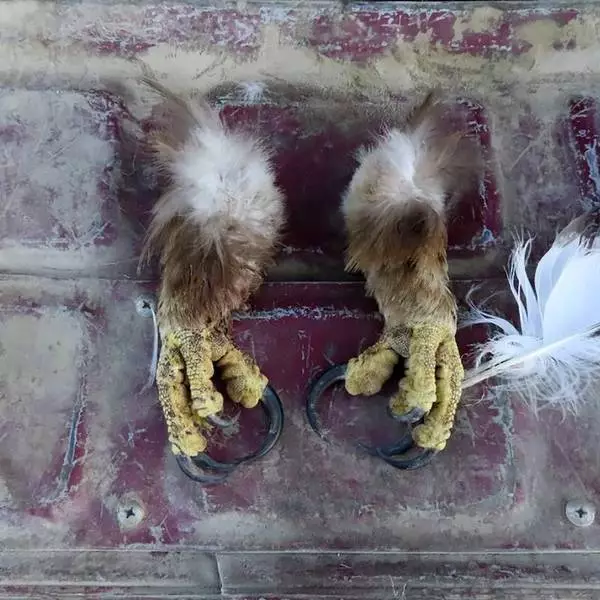
Man who killed eagles and trafficked their parts faces sentencing Thursday
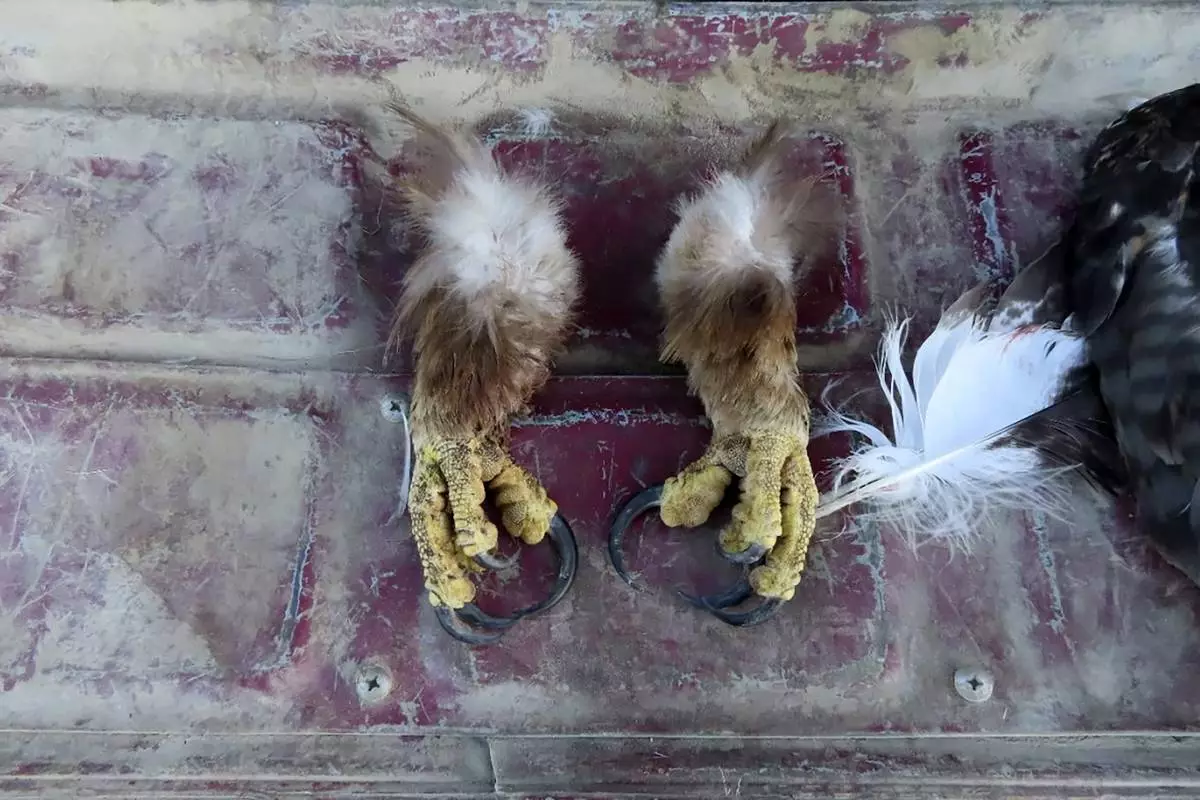
FILE - This undated photo from a court document provided by the U.S. Attorney for the District of Montana shows golden eagle feet recovered by law enforcement officers from a Washington state man's vehicle. (Courtesy of the U.S. Attorney for the District of Montana via AP, File)




